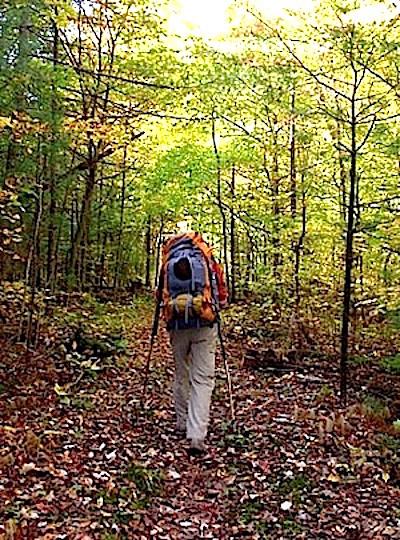
Why the declining interest in backcountry travel in the National Park System?/Bob Mishak
Glance through National Park System visitation statistics for a few years, and some puzzling numbers surface. For example: Doesn't anyone like to backpack anymore.
Ok, that was a little hyperbole. There are still a lot of backpackers in the National Park System. Just not as many as there were when Baby Boomers were coming of age.
Overall visitation to the parks in 2014 reached a record 292.8 million. But surprisingly few of those visitors spent a night -- whether in tent, on a boat, or in a lodge -- in the parks.
According to National Park Service statisticians, of those nearly 293 million who came to the parks last year, just 14.1 million stayed overnight. While that's up from the 13.5 million who spent at a night in 2013 -- that year visitation was significantly depressed by the partial government shutdown that closed most park units for 16 days -- it's slightly down from 2012 levels, when 14.3 million visitors stayed the night.
As for backcountry use, in 2014 the Park Service tallied 1.9 million overnight stays, while in 2013 there were 1.7 million, and in 2012 1.8 million. While those numbers seem bullish, they are quite a bit down from the late '70s and early '80s, when a good number of the Baby Boom generation was fit, able, and determined to see -- and sleep in -- the outdoors.
According to the Park Service, in 1979 there were almost 2.4 million backcountry travelers in the parks, or roughly 500,000 more than last year. In 1980, the number again approached 2.4 million.
Why the drop in backcountry camping, at a time when individualism is still going strong, when The North Face is seen on Broadway about as often as it is on the North Rim? That's the $64 million question.
"The NPS stats system just collects the 'how many' part of the equation - we have very little on 'why' except when there are major events, such as closings, re-openings, etc.," says Pam Ziesler, who works with the Park Service's Visitor Use Statistics Program.
Could it be related to fees charged at some national parks for backcountry access? While the small fees charged by some parks might not seem to be an impediment, access to U.S. Forest Service backcountry sites is free, says Kitty Benzar of the Western Slope No-Fee Coalition, and that might be draining some backpackers away from the parks.
Unfortunately, the Forest Service doesn't track backcountry usage like the Park Service does, and so has no easily obtained data that might indicate whether there has been an exodus of backpackers from park lands to forest lands.
Have those fees led you to vistas outside the National Park System?



Comments
I'm sure it has nothing to do with daily fees concocted for backcountry camping. The NPS is brilliant. They reduced backcountry camping in the Smokies by %30 the first year they implemented a backcountry fee. And despite the bs spouted by guide services, those numbers are still down. And don't believe the fake NPS stats spouted by NPS people. Data is being collected that isn't from the NPS showing backcountry camping is down because the NPS has manipulated numbers and been caught padding them here in the Smokies. Daily I hear from folks who show up in campsites showing full on the NPS site only to find them empty. Are people really forfeiting their money to the tune of 10 people per campsite? I find it a bit inconvenient for the NPS.
If it comes from you and the SFW, it's surely "truth", right? Obviously, from your failed lawsuit, it proves that you have ZERO credibility, and anything you state should be considered with quite a bit of skepticism.
Too much easily used electronic entertainment replacing outdoor activities?
Too many McDoubles and triple Whoppers producing more obesity and lethargy?
A key factor in this question is likely demographics. The baby boom generation provided a big increase in people in the prime backpacking age group in the 1970s and 1980s time period, and that coincided with the growth of the environmental movement. Census figures show a decline in percentage of Americans in the 18 to 45 age group in the past two decades. Just not as many potential backpackers out there these days.
Yep, I agree with that Jim. Just by shear numbers, the baby boomers out numbered the xers and yers. There's still a lot of young people in the backcountry.
King George III called us "rabble."
This from Pew Research:
Kurt,
Those numbers reflect the currently living not the peak populations. The more relevant numbers would be the number of Baby Boomers in the 70s and 80s and the number of Millennials now.